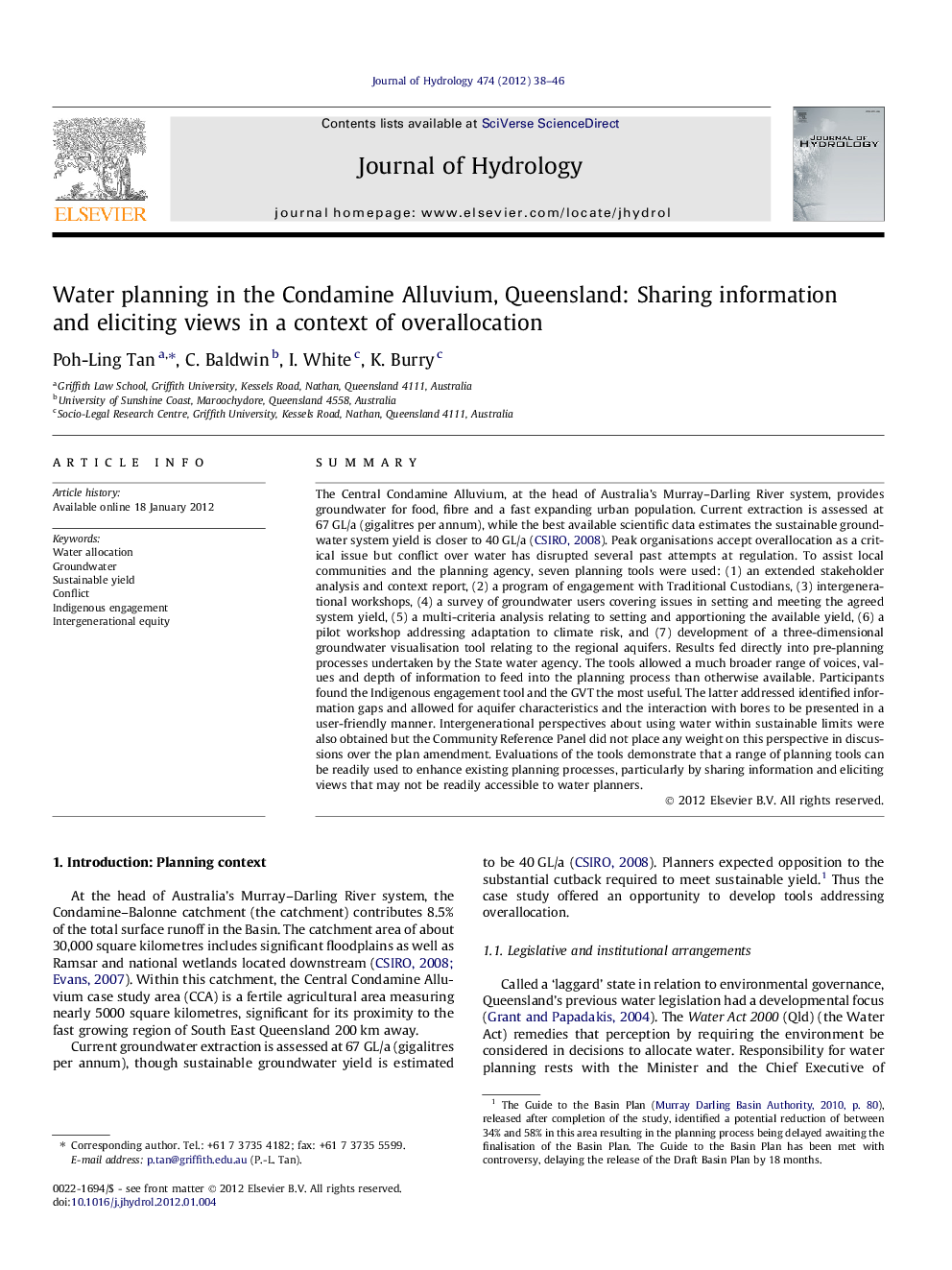| کد مقاله | کد نشریه | سال انتشار | مقاله انگلیسی | نسخه تمام متن |
|---|---|---|---|---|
| 4576688 | 1629974 | 2012 | 9 صفحه PDF | دانلود رایگان |

SummaryThe Central Condamine Alluvium, at the head of Australia’s Murray–Darling River system, provides groundwater for food, fibre and a fast expanding urban population. Current extraction is assessed at 67 GL/a (gigalitres per annum), while the best available scientific data estimates the sustainable groundwater system yield is closer to 40 GL/a (CSIRO, 2008). Peak organisations accept overallocation as a critical issue but conflict over water has disrupted several past attempts at regulation. To assist local communities and the planning agency, seven planning tools were used: (1) an extended stakeholder analysis and context report, (2) a program of engagement with Traditional Custodians, (3) intergenerational workshops, (4) a survey of groundwater users covering issues in setting and meeting the agreed system yield, (5) a multi-criteria analysis relating to setting and apportioning the available yield, (6) a pilot workshop addressing adaptation to climate risk, and (7) development of a three-dimensional groundwater visualisation tool relating to the regional aquifers. Results fed directly into pre-planning processes undertaken by the State water agency. The tools allowed a much broader range of voices, values and depth of information to feed into the planning process than otherwise available. Participants found the Indigenous engagement tool and the GVT the most useful. The latter addressed identified information gaps and allowed for aquifer characteristics and the interaction with bores to be presented in a user-friendly manner. Intergenerational perspectives about using water within sustainable limits were also obtained but the Community Reference Panel did not place any weight on this perspective in discussions over the plan amendment. Evaluations of the tools demonstrate that a range of planning tools can be readily used to enhance existing planning processes, particularly by sharing information and eliciting views that may not be readily accessible to water planners.
► Seven tools were developed to address issues in groundwater planning.
► A cutback of about 40% of use was required to meet sustainable yield.
► A range of tools are readily available for eliciting community views.
► Groundwater visualisation tool was declared ‘best practice’ by stakeholders.
► Social learning is vital for consensus on sustainable use level.
Journal: Journal of Hydrology - Volume 474, 12 December 2012, Pages 38–46